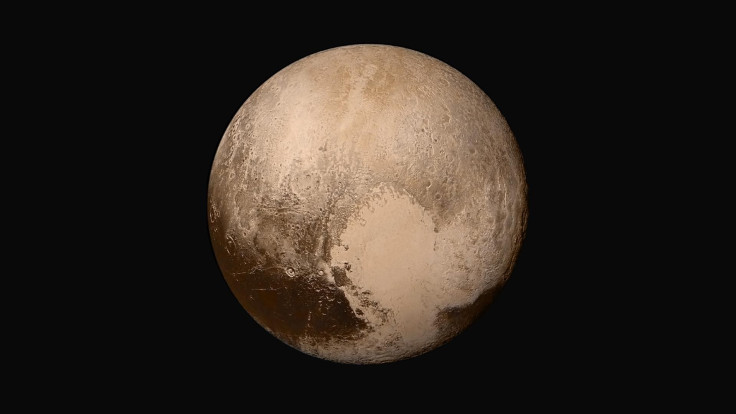Pluto Discovery: How Buried Oceans In Dwarf Planet, Other Worlds May Prove Alien Existence

Pluto is believed to have oceans underneath its frozen surface, but it's not the only one, according to a new study.
In a new paper published in the journal Nature Geoscience this week, researchers suggested that Pluto has an insulating layer composed of gas that prevents its liquid-water ocean from completely freezing over. The new study also said that this occurrence may be incredibly common in other icy worlds scattered across the universe.
The study's lead author, Shunichi Kamata, a researcher from the Creative Research Institution at Hokkaido University, explained in a statement that the existence of subsurface bodies of liquid water across the cosmos increases the possibility that alien lifeforms exist and thrive.
"This could mean there are more oceans in the universe than previously thought, making the existence of extraterrestrial life more plausible," Kamata said.
Despite previous research suggesting the existence of an ocean under Pluto's surface, it has remained unclear how exactly the liquid water remained unfrozen over billions of years. Pluto, after all, doesn't orbit a gas giant like Jupiter and Saturn, so it's interior doesn't get heated up by tidal forces unlike the moons Europa and Enceladus, both of which also have oceans underneath their surface.
Kamata and his fellow authors suggested that an insulating layer of "gas hydrates" may be keeping the water from freezing solid. Gas hydrates are ice-like solids composed of gases trapped within molecular water cages.
Based on the computer simulations conducted by the team of researchers, the ocean would have turned into ice hundreds of millions of years ago without an insulating layer. The scientists also said that the gas inside the water cages of the insulating layer might be methane since this gas can't be detected in Pluto's atmosphere.
Previous studies first suggested the existence of a subsurface ocean on Pluto due to data obtained by NASA's New Horizons about the dwarf planet's Sputnik Planitia during its 2015 flyby. This plain of nitrogen ice spans 600 miles (1,000 kilometers) and forms the left lobe of Pluto's famous "heart."
According to observations made by the New Horizons spacecraft, Sputnik Planitia is aligned with the planet's tidal axis, which is where the gravitational pull from Pluto's biggest moon, Charon, is strongest. Researchers suggested that this alignment was caused by the extra mass concentrated at and near the surface in the Sputnik Planitia region.
Previous studies said that the extra mass comprised nitrogen ice on the plain and the water from the subsurface ocean. The liquid water apparently rose from deep underground after the comet impact that formed Sputnik Planitia destroyed the crust in that locale.
© Copyright IBTimes 2025. All rights reserved.





















